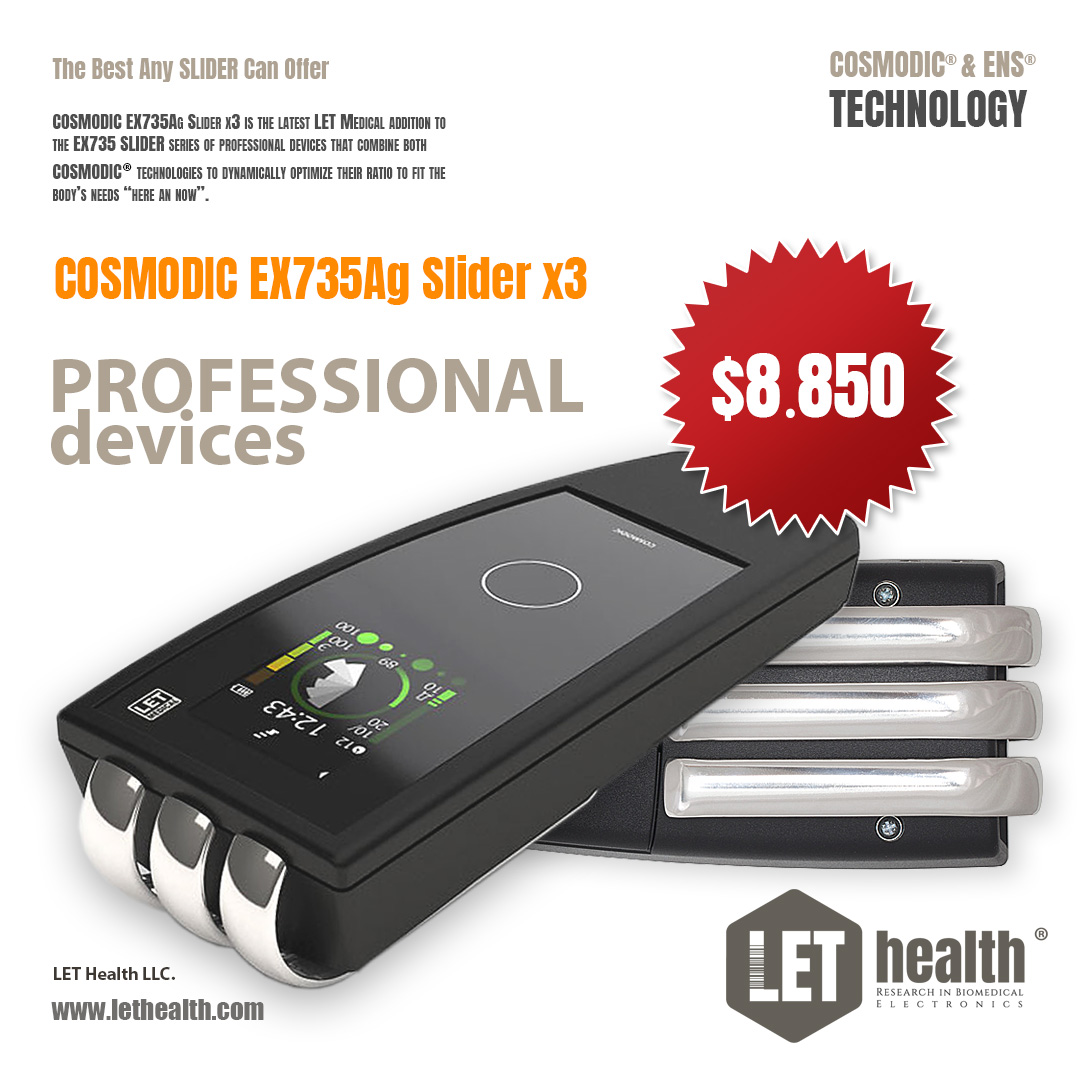COSMODIC is the technology
of direct amplification of the body’s healing potential by “adding to healing”.
COSMODIC ® — technology of Restoration
LET Medical Research Laboratory and Dr. Alexander Karasev introduced COSMODIC ® at the beginning of this century (and this millennium). COSMODIC ® came as a natural progression of SCENAR on the next quality level: subtler, more profound, more regenerative electrotherapy that used micro-resonances in order to tune into, amplify, and harmonize the body’s healing reactions. With COSMODIC ®, the restorative functions of the body could be amplified directly, without provoking them with the artificially increased “neuro-like” device impulses (in other words, without the “pain amplification” like in SCENAR).
We call COSMODIC devices the “second generation SCENARs”.
COSMODIC ® became possible due to the implementation of multiple feedbacks. 46 feedback loops (instead of just 1 in SCENAR) allowed collecting a large amount of data about the body condition including the harmonics of the body’s healing reactions that were then directly amplified through micro-resonances.
Multiple feedbacks also allow splitting the “big SCENAR stimulus” into several small ones, where the transition from one small stimulus to another happens on command of the body itself through the feedbacks.

COSMODIC ® creates “adaptive regulatory bundles” of impulses, where one bundle flows into another like piano accords.
The sophisticated COSMODIC ® signals can be both stimulating and sedating mimicking the regulating activity of the central nervous system (in comparison, TENS and SCENAR signals are always stimulating). And just like the nervous system, COSMODIC ® uses both central and local mechanisms to wake up the cellular memory and enhance the innate capacity of our body to recover, regenerate, and rejuvenate.
COSMODIC technology facilitates restoration at the cellular level and promotes the actual regeneration of the bodily structures.
COSMODIC is the technology of direct amplification
of the body’s healing potential by “adding to healing”.
COSMODIC® represents the next phase in the evolution of SСENAR technology, originating from the innovative work of Russian scientist Dr. Alexander Karasev in the mid-1980s, as part of the Russian Space Research Program. Often referred to as the 'second generation SСENARs', COSMODIC® devices continue the legacy of their predecessors.
Both SСENAR and COSMODIC® function as low-frequency dynamic adaptive electrical stimulators, serving as Universal Regulators of Bodily Functions. They revitalize the body's natural healing mechanisms, facilitating rapid recovery from a diverse range of ailments, from minor ailments like colds and bruises to more complex conditions like autoimmune disorders and degenerative diseases.
However, they achieve their therapeutic goals through distinct methodologies. While SСENAR encourages a robust healing response by integrating its signals with those of the ailment (akin to 'adding to pain'), COSMODIC® adopts a more direct approach of 'adding to healing'. It attentively listens to the body's cues and employs micro-resonances to amplify its innate healing processes, awakening and bolstering cellular-level regeneration. Notably, COSMODIC® can discern the precise moment when cells transition into regeneration mode.
Both devices share two key features:
- The shape of their electrical impulses, resembling natural neuro-impulses, facilitating communication with the body.
- The ability to receive feedback, enabling them to effectively interpret the body's signals.

However, COSMODIC® outperforms SСENAR in its receptivity, boasting 46 feedback channels compared to SСENAR's single channel. This enables COSMODIC® to synchronize its active impulses with a broader spectrum of the body's responses, beyond just skin impedance.
This enhanced receptivity translates into a new quality of impulses for COSMODIC®. Utilizing low-frequency SСENAR signals as carriers, COSMODIC® incorporates dynamically changing high-frequency oscillations, enriching the signal with information. This transformation renders COSMODIC® signals more regulatory than stimulatory, resembling the functions of the Central Nervous System (CNS).
The multidimensional and information-rich nature of COSMODIC® signals enables them to modulate bodily processes, capable of both stimulating and sedating functions. This versatility, embodied in adaptive regulatory bundles, marks a significant advancement in therapeutic technology.